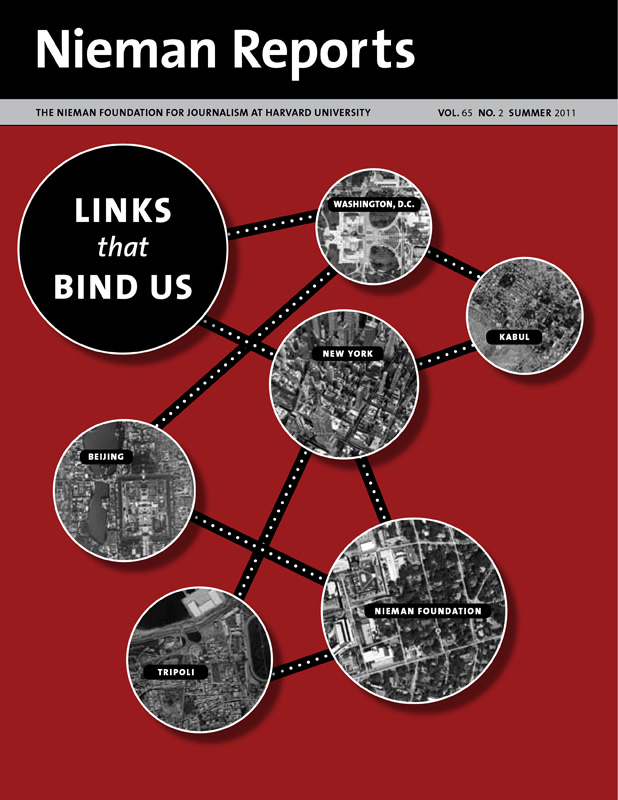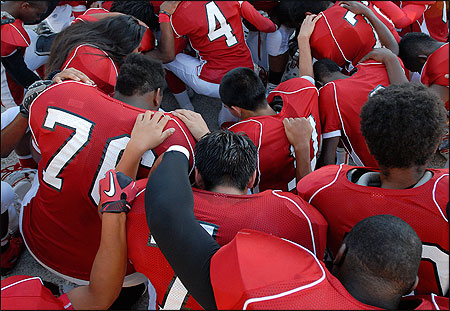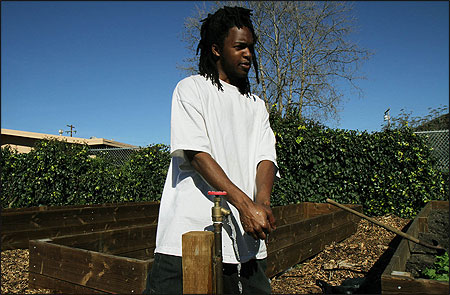
Links that Bind Us
In digital space, journalists are proving to be a powerful force in creating, nurturing and engaging communities. No longer serving only geographic zones, they confront the fragmentation of audience and the need to attract and retain “eyeballs.” Their efforts to embrace and interact with communities are fueled by an instinct to survive. Habits and hobbies, interests and values, political leanings, and sports allegiances are the grist of community formation. Discover the various roles journalists are assuming and how the links we share bind us.

We are experiencing a sea change in how students at the Graduate School of Journalism at the University of California, Berkeley learn about reporting. Three years ago we tossed out the first-semester intensive reporting requirement and replaced it with the work that goes into producing three hyperlocal websites. Funded in part by a Ford Foundation grant to report on underserved communities near our campus, these websites—covering San Francisco's Mission District, North Oakland, and Richmond—synthesize writing and reporting with cross-platform media production and community service.
These students also learn quickly what journalism partnerships mean and how they work. Not only does their reporting appear on one of these three hyperlocal sites, but it sometimes finds its way onto SFGate, the San Francisco Chronicle's online vehicle; the nonprofit Bay Citizen, an independent news site about civic and community issues in the Bay Area; and the regional edition of The New York Times. This experience is proving to be a valuable entry point for figuring out what connects people to journalism and journalism to people.
Richmond—Forgotten No Longer
Just over 100,000 people live in Richmond, a city about five miles north of Berkeley. Quite often it's a place people pass on their commute to wealthier communities along the stretch of I-80 heading toward Sacramento, the state capital. With chronic underemployment and a reputation for crime, it is among the poorer cities in the Bay Area; a few years ago, hearing "Richmond" sparked thoughts of a runaway homicide rate.
With the exception of a gentrified area called Point Richmond, the city is a diverse, hardscrabble place comprised primarily of working class whites, African Americans, and Latinos. One third of the people who live there are foreign born. It was a boomtown in the 1940's, a time that historians refer to as the "Second Gold Rush." Except for Chevron's large refinery, the manufacturing base has withered in Richmond, as it has in so many American industrial cities.
The Contra Costa Times reports on the city, but most of that newspaper's editorial output aims east toward the wealthier suburbs. The San Francisco Chronicle does an occasional story about Richmond, but for the most part news coverage is scarce and predictably negative. Essentially, our hyperlocal site, Richmond Confidential, has little journalistic competition. Last fall 16 graduate students were its full-time reporters. Yet convincing residents to sample our stories put us in a different competition—for their time and attention.
Being a part of this teaching effort was wholly new for me. Generally I teach video storytelling, reporting and production in the two-year program at Berkeley. But as we, like most journalism schools, collapse our teaching silos, adding a video instructor into the hyperlocal mix made a lot of sense, given the vital requirement of presenting a visual experience.
At its heart, Richmond Confidential is about making community connections, whether this means reporters connecting with sources or residents connecting with us. One way we measured community engagement was through the number of comments we received; another was by Facebook "likes." It turned out that most of the traffic to our site arrives via Facebook.
Comments and "likes" are good indicators, but the true test of whether a story mattered to our target audience—residents of Richmond—was if they started talking to each other on the site. Talking to us was fine—and we encouraged it, but when conversation started among them we knew what we set out to do was working.
This didn't happen overnight. They had grown accustomed to reading and hearing a consistent narrative about their city: it's dangerous; no one would want to live there; it's an ugly, post-industrial wasteland. Our job became hunting for community stories that posited a different yet equally genuine narrative. By doing this, we would earn their trust.
The messages our stories convey are these: This is your town; it has a history; here is some useful, true information about it. And here is your voice reflected in our reporting. Our stories are ones in which respect is evident for the struggle that families go through each day to get by. While Richmond boasts a long history of bare-knuckle politics and vibrant local players, such battles are still being played out today—and we covered them. Some recent ones have revolved around jobs and development, including a proposed casino on Native American land, and there are always stories to be done about crime, health care, and immigration.
This past fall our student reporters never lacked for material with which to build strong and relevant stories. A November election for mayor and political posturing for control of the city council became the focus of much of our reporting. When the local fire and police unions used political action committee money to hire a private investigator to expose what they said was the sitting mayor's lack of mental competency for the job, our story started a conversation in Richmond that percolated throughout the election season. Reporter David Ferry followed up with a series of investigative stories, tracing the large amounts of campaign money flowing through this poor city. We collaborated with information scientists at Berkeley to build an interactive campaign finance tracker.
The intensity of community reporting can transform it into an emotional experience, sometimes painfully so. In a February 8 feature story that Robert Rogers wrote about a community garden, he included an upbeat interview with Ervin Coley III, a young man employed by a local environmental jobs project. On March 31, Rogers wrote the story about Coley's murder, which turned out to be part of a series of gang-related shootings. Earlier in the fall we had produced detailed daily coverage of a preliminary hearing involving a gang rape that had staggered the city a year before.

Football—A Community Window
One of the most unexpected highlights of our engagement with the community came about because of our coverage of high school football. Our reporters knew little about sports and weren't drawn to covering it. Their early stories contained embarrassing errors; even though they were raised in this country, few of these graduate students actually knew how football is played. Learning the rules was step one.
As errors diminished, game coverage improved. But other things about our coverage were happening, too, and we were taking notice. In Richmond, being publicly acknowledged is a rare thing. So our stories about the two local high school teams turned out to be about much more than football—they were about the place of these kids in their community. We covered every game; no one else did. We supplemented our written stories with audio slideshow features showing what happens in the locker room when the coaches talked with players. We took and posted on our site hundreds of photos of players, cheerleaders and fans.
The year before our coverage began, John F. Kennedy High School did not finish the season because their players had academic problems and Richmond displayed a general lack of interest. This past season was different. Here's a letter we received that helps explain why:
"I just wanted to drop you all a note to say thank you to everyone at Richmond Confidential who covered Kennedy High School's football team this year (and last year too). It really meant a lot to the kids to get some attention and some positive news coverage.
What you may not know is that these kids were called losers, thugs and criminals and were told they wouldn't have the grades to play, etc. and that even if they did, they wouldn't be any good long before the first game was played.
Overcoming a culture of losing and underachieving is difficult, and it is far from over. We have a lot of work still ahead of us in the classroom and on the field but the coverage you provided gave these kids some immediate feedback and gratification, especially the coverage for the JV team. That is something that, as far as I know, has never been done before and was a great surprise to the kids at both JFK and at Richmond also.
This is a measure of community engagement that can't be underestimated. And it stems, in large part, from the vernacular nature of our coverage. In reporting on these games the students learned a valuable lesson: Inestimable value comes out of making a human connection visible through something as ordinary as a half-time pep talk by a coach to his players. Encapsulated in these moments is a world of meaning that stretches deep into the daily challenges of parenting, poverty and family that are so much a part of the lives of the people in Richmond.
I am under no illusion about the sustainability of these three hyperlocal websites. The program is halfway through a second Ford Foundation grant, and future support is uncertain. But because this approach is now how we teach effective cross-platform reporting, graduate students at Berkeley's j-school will continue to be a part of these communities as hyperlocal reporters. It will now depend on tuition and the school's operating budget to finance what happens on all three of our sites. Our fundraising continues.
Teaching reporting by committing students to a community is, for me, a highly effective and rewarding idea. To engage the people of Richmond, we have to be innovative and creative, useful for, and respectful of our readers. We have to be open to new story forms that work. We have to bring the traditional values of investigative and civic reporting to a community ignored by the mainstream press. We also have to be transparent, with an ear to the ground and highly responsive to the place and the people within it.
Bob Calo is a senior lecturer at the Graduate School of Journalism at the University of California, Berkeley, where he codirects the video storytelling and reporting program and is executive editor of Richmond Confidential. During a fellowship at Harvard's Joan Shorenstein Center for the Press, Politics and Public Policy this past semester, he wrote a paper about audience disengagement.


